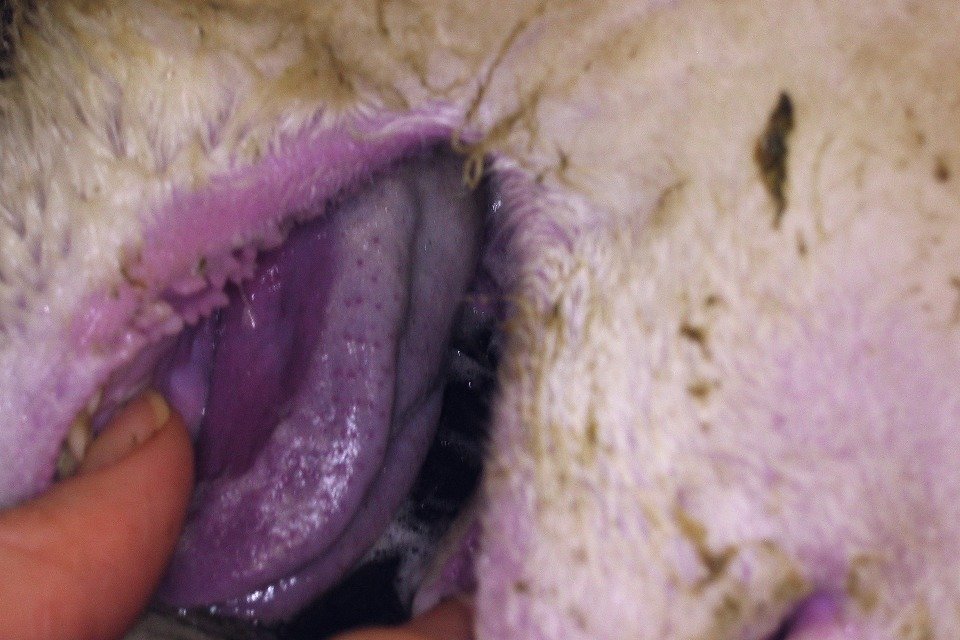Bluetongue Virus
Bluetongue is a viral disease that affects sheep, cattle, deer, goats, and camelids. Although sheep are the most severely affected, cattle play a significant role as the main mammalian reservoir of the virus. Bluetongue is a notifiable disease, meaning any suspected cases must be reported immediately to the local Animal Health Office. The virus is transmitted by biting midges of the genus Culicoides and not typically through direct contact with infected animals.
Symptoms and diagnosis of Bluetongue in sheep 🩺
Symptoms
The clinical signs of Bluetongue in sheep can vary depending on the virus strain and the breed of sheep. Here are some common symptoms:
- High fever (up to 42°C)
- Stiffness and reluctance to move
- Swelling of the face and ears
- Fluid in the lungs causing breathing difficulties
- Skin erosions and ulcers on the lips
- Profuse drooling and nasal discharge
- Reddening of the coronary band and around the muzzle
- Swollen tongue, which may appear blue due to lack of oxygen (hence the name "Bluetongue")
- Abortion and foetal deformities in pregnant sheep
In some cases, sudden unexplained deaths may be the first sign of the disease in extensively managed flocks.
Diagnosis
Diagnosis is based on clinical signs and confirmed through laboratory tests. These tests include:
- Polymerase Chain Reaction (PCR) to detect virus fragments
- Blood sampling to test for antibodies to Bluetongue virus
It's crucial to differentiate Bluetongue from other diseases with similar symptoms, such as Foot and Mouth Disease, Orf, and Clostridial diseases.
How to treat Bluetongue in sheep 💊
Unfortunately, there is no specific treatment for Bluetongue. Management focuses on supportive care to alleviate symptoms and prevent secondary infections. This includes:
- Antibiotic therapy to control secondary bacterial infections
- Anti-inflammatory medications to reduce symptoms
It's essential to consult a veterinarian for appropriate management and care.
How to prevent Bluetongue in sheep 🛡️
Vaccination
Vaccination is the primary method of preventing Bluetongue. There are multiple serotypes of the virus, and vaccines are serotype-specific. In the UK, BTV-8 vaccines are available and are killed vaccines. It's important to note that vaccination against one serotype does not protect against others.
Vector Control
Controlling the midge population can help reduce the spread of Bluetongue. This can be achieved through:
- Using pour-on insecticides
- Applying larvicides to water sources
- Moving animals indoors during peak midge activity times (early morning and late afternoon)
However, these methods can be expensive and may not provide complete protection.
Movement Restrictions
Limiting the movement of animals during the active vector season can help prevent the introduction of new virus strains into areas with susceptible vectors. This is particularly important during outbreaks.
Monitoring and Reporting
Regular monitoring of the disease situation and reporting any suspicious cases to the local Animal Health Office is crucial for controlling Bluetongue. Staying informed about the current disease status in your region can help you take timely preventive measures.
Bluetongue is a notifiable disease ‼️
If you suspect bluetongue, you must report it immediately by calling:
- 03000 200 301 in England
- 03003 038 268 in Wales
- your local Field Services Office in Scotland
Bluetongue is a notifiable disease. This means if you do not report it, you’re breaking the law.


